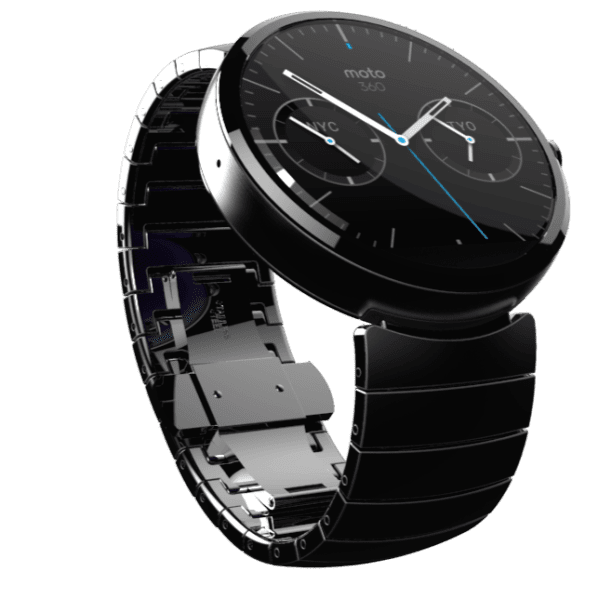Over the last year, Motorola has introduced a number of interesting handsets that successfully combine innovative industrial design and interaction design. With one recent smart phone, meta data suggested that the team’s approach to swipes, taps, voice commands and other means of interaction basically designed away the power button!
Even more interesting—and the Internet is abuzz this week with news of it—is Motorola’s venture into Android-powered watches. (Apple also has something up, or near, its sleeve as it were.)
The Moto 360 watch is on the cusp of release, along with competitive offerings from Samsung, HTC and others. You can see a brief demo of the Moto 360 on Engadget. The new Motorola watch features a unique circular display, stainless steel elements for a premium feel, voice control (OK, Google!) and software that allows for a customizable interface. The design team explained that their software builds on a foundation of Android Wear and adds complementary experiences. They repeatedly assured the capacity crowd that they did not want to try and design a smart phone experience in a watch.

Jim Palmer outlined the experience principles that his team followed to build the Moto 360 as well as other products:
- Respect the user’s attention (e.g., carefully consider use of a phone’s notification light).
- Remove friction (e.g., train a device to behave a certain way based on phrases or gestures; specifically, the team designed a unique hand gesture to actuate the camera within a phone without turning on the phone itself—again meta data showed strong adoption of both the gesture and the “chromeless” camera UI that made capturing a moment super fast and simple).
- Automate the mundane (e.g., Motorola is experimenting with a new system of interaction dubbed “The Peek”).
- Obsess over low power. (i.e., How can software help us do more while consuming less battery power?).
Some key takeaways from the talk:
- “Responsive” shouldn’t be relegated to simply matching the UI to a display—it must consider attention, friction, tedium and power.
- Embrace the human computer interaction (HCI) principle of calm computing (…where interactions between technology and users are designed to occur in users’ periphery rather than constantly at the center of attention; information smoothly shifts to a user’s attention when needed but otherwise stays calmly in his/her periphery…).
- Devices should always always be listening for the user’s commands (OK, Google will be a feature of all Android devices wearable or not moving forward). Context is critical; Motorola uses multiple processors to consider multiple aspects of the user’s environment (e.g., time, elevation, movement, light, etc.). Can a phone know that its user is in a meeting—or sleeping—and adjust accordingly? Can it recognize when its user is driving so that messages become audible?
- Read and internalize Thinking Fast & Slow by Daniel Kahneman.
As an aside, Motorola’s offices in the Merchandise Mart are amazing! Check out a slideshow of the space as well as an interview with the design principal on fostering collaboration and innovation.


No comments :
Post a Comment